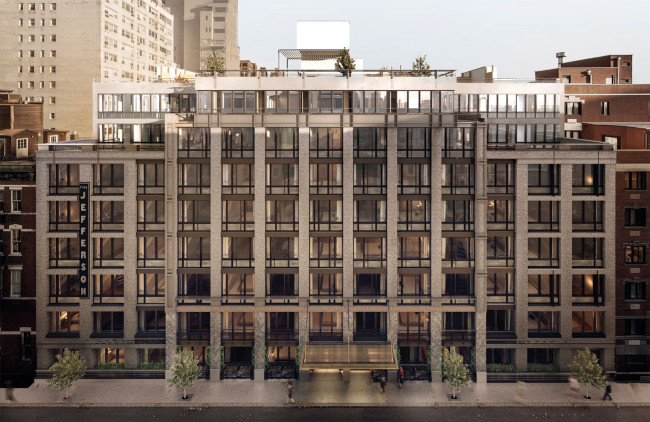Why do NYC co-op maintenance fees vary so much from building to building?

The size of a co-op building's underlying mortgage has a big impact on the monthly maintenance fee.
iStock
If you're looking to buy a co-op and you're new to New York City, you've probably had a rude awakening: In addition to the high prices you have to pay here, you also have to pay a monthly fee, which is called maintenance in a co-op.
(If you buy a condo, you pay common charges, which are calculated differently. See Brick Underground's "What's the difference between maintenance and common charges" for more information.)
In terms of current numbers, New Yorkers are paying an average of $1.73 per square foot in co-op maintenance in the fourth quarter of 2018, based on sales data, according to real estate appraisal firm Miller Samuel. So for an 800-square-foot apartment, the maintenance would be $1,384.
Because maintenance covers numerous building expenses, like mortgage payments, taxes, staffing, and upkeep, it can vary wildly from building to building, and even apartment to apartment.
So, what’s the deal? We talked with a variety of New York City real estate professionals to get the lowdown on why these additional costs are all over the map. Here’s what they told us.
1. Underlying mortgage
This is a big one. Co-op shareholders make payments on a building's mortgage and the size of the building's underlying mortgage affects the monthly maintenance fee. If the building has substantial debt, either because of a high interest rate or a large loan, that is one factor that could increase the maintenance considerably. John Wollberg, executive vice president and managing director at Halstead, notes that older co-ops commonly refinance to absorb the cost of capital improvements, a move that can also raise maintenance costs.
2. Taxes and abatements
Co-op maintenance fees also include the owner's share of the building's property taxes. The cooperative pays the real estate taxes for the land and building, and then thanks to a very complicated system of exemptions and abatements, credits the shareholders for any reductions it receives. But even co-op shareholders with the same number of shares can receive different tax breaks, depending on whether they are owned by a senior or a person with a disability, for example.
3. Building size
The number of apartments in a building can also have a significant effect on maintenance fees.
“In buildings where the pool of shareholders is smaller—normally in smaller buildings—the maintenance fees tend to increase by virtue of fewer payers around to financially share in the burden,” says Aleksandra Scepanovic, managing director at Ideal Properties Group.
If you’re in an eight-unit building and the boiler or the roof goes, that can be a pretty hefty expense,” says Josh Sarnell, an agent with Citi Habitats.
Steve Elbaz, president of Esquire Management Corporation, explains how more apartments can make expenses much more manageable. For example, if you have a budget of $250,000 for building staff salaries. “In a 50-unit building, 50 owners share that cost. In a 250 unit building, it’s only $1,000 per year per owner,” he says. “A lot of costs get amortized. Double the building doesn’t mean double the staff.”
4. Basic amenities
You don’t have to have a deluxe rooftop oasis or indoor pool to raise your maintenance costs. The lobby, hallways, a simple workout area, the laundry room, storage facilities all need to be maintained.
“That’s also part of what you own,” says John Harrison, a broker at CORE. “It’s not just that box [you live in] that’s causing you to pay more. What else are you getting?”
Additional, less glamorous comforts that can impact maintenance can include insurance, landscaping, heating and cooling costs, and paying for snow removal.
5. Next level amenities
Obviously, living in a building with high-end amenities and services that will also impact your maintenance.
“A true white-glove full service building is significantly more expensive to run,” says Scepanovic. “It may require more staff, and the residents may have a higher level of expectation of services, so naturally the maintenance is likely to be more costly. Supplies, utilities, upkeep costs and staffing for a pet spa or a saltwater swimming pool, for example, will take a financial toll.”
6. Union versus non-union building
There’s no way around it: Buildings staffed by union members are more expensive to run.
“You could have the same individual doing the same work in a building the same size, and in a non-union building the person could be making $40,000-$50,000. A union person could make double that,” says Elbaz. (FYI: if someone tells you there’s a chance the building will go non-union, be very skeptical—it’s extremely rare.)
7. Mismanagement
If a co-op doesn’t isn't on top of its books, that could mean extra cash coming out of residents’ pockets. According to Elbaz, examples include frivolous spending, a board neglecting to protest unfair real estate taxes and trying to get them reduced, and fellow residents not paying fees.
“If 20 percent of people aren’t paying their maintenance, the costs go up to cover the deadbeats,” he says.
8. Commercial property in building
A commercial property located in a building can be a real boon to the bottom line.
“It’s fantastic income, there’s equity in the building,” says Wollberg.
Rachel Bakhchi, an agent with Siderow Residential Group, says it can go both ways. If the building owns the retail space and is dependent on it to meet expenses, shareholders can get hit with an assessment or higher maintenance fees to make up for the lost income if a retail tenant leaves or there's a lapse in rental income
9. Land lease
If the maintenance for an otherwise-seeming “normal” apartment (i.e., not luxury) seems ridiculously high, a land lease—that is, the building does not actually own the land it sits on, but pays rent to another entity—may be the culprit. Land leases are complicated, and some would say not worth the trouble, but familiar hallmarks are high maintenance fees, and competitively-low asking prices, set at those levels in part to offset the sky-high common charges.
10. The particulars of an apartment
When it comes to co-ops, Wollberg is quick to note that the allocation of shares or percentage of ownership (which directly affects maintenance), is an “inexact science.” “A lot of it was done by gut,” he says. “What is the view, are you near the trash compactor, is it a corner unit?”
The inconsistencies of layouts in older buildings made things even more challenging to set a fair ratio. “Apartments weren’t necessarily identical in the same line. You have unique units,” he says.


























